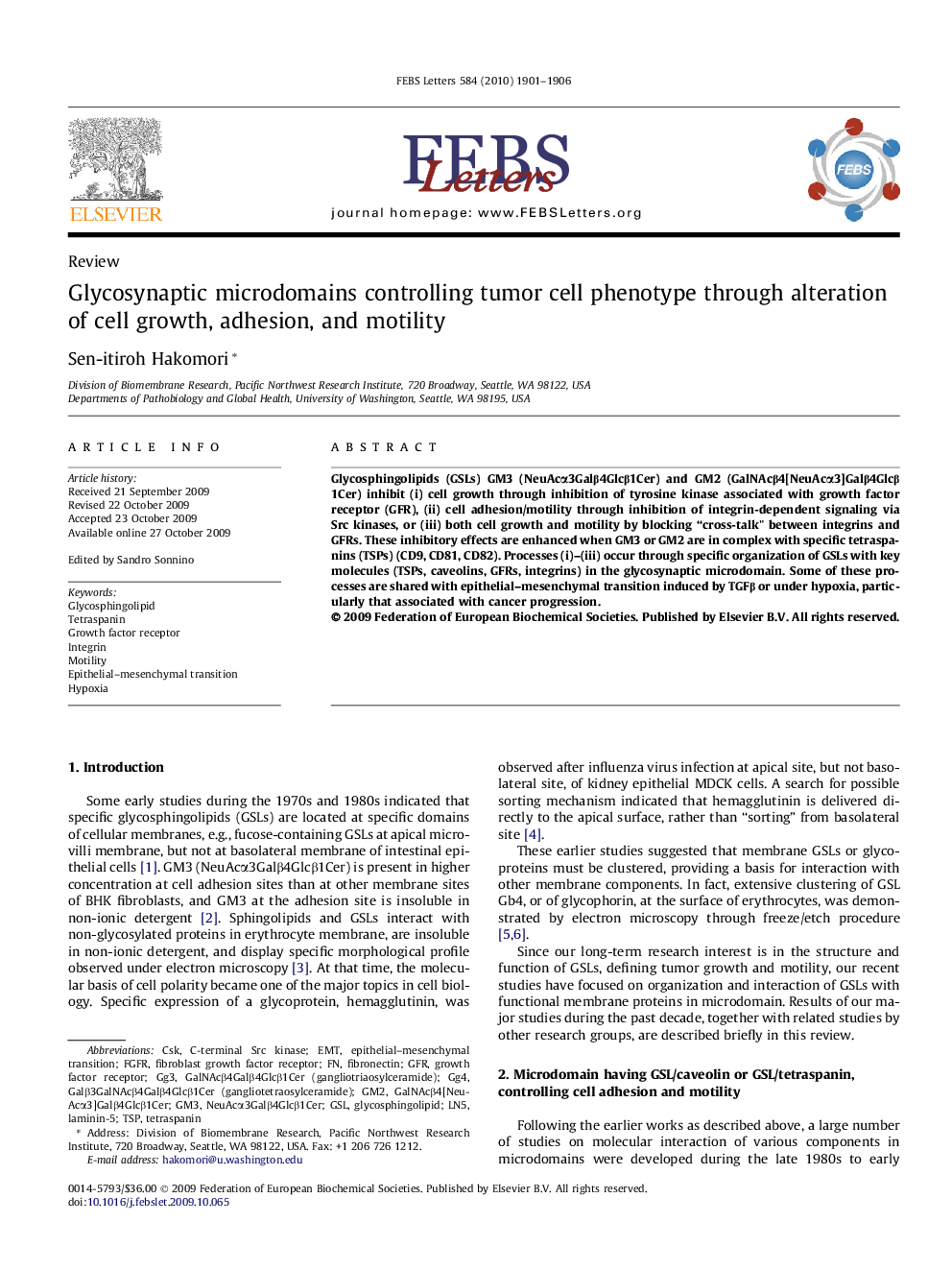| Article ID | Journal | Published Year | Pages | File Type |
|---|---|---|---|---|
| 2049317 | FEBS Letters | 2010 | 6 Pages |
Glycosphingolipids (GSLs) GM3 (NeuAcα3Galβ4Glcβ1Cer) and GM2 (GalNAcβ4[NeuAcα3]Galβ4Glcβ1Cer) inhibit (i) cell growth through inhibition of tyrosine kinase associated with growth factor receptor (GFR), (ii) cell adhesion/motility through inhibition of integrin-dependent signaling via Src kinases, or (iii) both cell growth and motility by blocking “cross-talk” between integrins and GFRs. These inhibitory effects are enhanced when GM3 or GM2 are in complex with specific tetraspanins (TSPs) (CD9, CD81, CD82). Processes (i)–(iii) occur through specific organization of GSLs with key molecules (TSPs, caveolins, GFRs, integrins) in the glycosynaptic microdomain. Some of these processes are shared with epithelial–mesenchymal transition induced by TGFβ or under hypoxia, particularly that associated with cancer progression.
